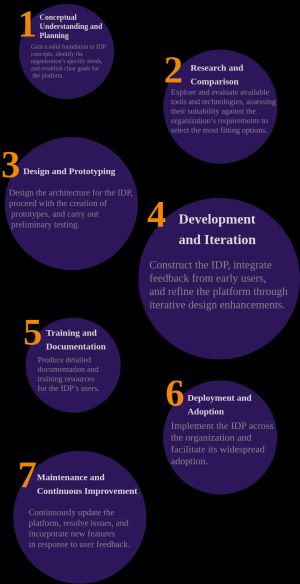Unleashing Your Platform Potential
Explore the transition from DevOps to Internal Developer Platforms and discover how IDPs enhance developer autonomy, accelerate deployment cycles, and improve operational efficiency.
Unleashing Your Platform Potential
Summary
In this article, we aim to unpack the myriad benefits of transitioning from DevOps to Internal Developer Platforms. From enhancing developer autonomy and accelerating deployment cycles to improving operational efficiency and scalability, we'll explore how IDPs are not just changing the game but setting a new standard for software development. Join us as we journey through the reasons behind this shift and how it could be a game-changer for your team or organization.
Introduction
In the ever-evolving landscape of technology and software development, provocative statements like "DevOps is dead" have stirred the pot within the industry over the past years. But how much truth does this bold claim hold? At Solutions Gorilla, our stance on this matter is nuanced. While we acknowledge the foundational principles of DevOps were well-intentioned, we also believe its execution in the enterprise realm has fallen short of expectations.
This realization led to the birth of Solutions Gorilla. Our mission is not to discard the core ideals of DevOps, but to refine and adapt its methodologies to better suit the challenges and opportunities of the emerging IDP era. Platform Engineering isn't just about coding and infrastructure; it's about revolutionizing the way we think about and interact with technology.
Get Started Building Your Own IDP
Creating your own Internal Developer Platform (IDP) from the ground up is a formidable task that demands a team of individuals possessing extensive expertise across a broad range of disciplines. An IDP encompasses all facets of software development, necessitating your team to be proficient in areas such as:
- DNS management
- Certificate handling
- Monitoring and tracing
- Continuous integration pipelines
- Continuous delivery
- DORA metrics implementation
- Project management visibility
Additionally, IDP extends beyond just developers; it also involves considering DORA metrics and ensuring visibility for non-technical personnel involved in project management and investment planning. Should you have the resources or the intention to assemble such a team, here's a refined overview of what the project lifecycle might look like:
Critical First Steps
Understanding the critical nature of the first and second steps is essential, as they will identify the optimal solutions in their respective areas and how these solutions can be effectively integrated. For instance, implementing a service mesh may be necessary to facilitate a strategy like blue-green deployment. Initially selecting solutions with a comprehensive understanding of the available options is vital to avoid repeated revisions if the combination of tools involved in creating a platform fails to meet certain requirements.
Project Timeline Considerations
The size of the circle indicates the duration of a specific step in the project. Although it's challenging to assign precise numbers to each step, we can distinguish them based on their relative scale. The extent of activities such as training, documentation, and prototyping will vary depending on the size of the teams involved in the process. It's certain that the intricacy of the project will necessitate several months of effort, even for small teams with minimal requirements.

Project lifecycle visualization showing the relative duration and complexity of each phase in building an Internal Developer Platform
However, it's crucial to acknowledge that the team may not be exclusively devoted to this project alone. Daily distractions from other tasks, interactions with colleagues, and potential staff turnovers can impede progress, necessitating the onboarding of new members and further delaying the timeline.
Embarking on the journey to build an IDP from scratch is a challenging and lengthy process that extends over several months, with maintenance and enhancements continuing indefinitely. This endeavor requires not only technical acumen but also strategic foresight and a commitment to overcoming the inevitable hurdles along the way.
Maximizing the Benefits of an Existing Internal Developer Platform
The market for Internal Developer Platforms (IDPs) is rapidly expanding as Platform Engineering gains traction. Many companies are venturing into creating their own Software as a Service (SaaS) offerings for IDPs, with some aiming to address both developer and management requirements comprehensively. Meanwhile, others focus on crafting an interface and templating for what is known as an Internal Developer Portal.
Despite sharing the IDP acronym, it's important to distinguish that a platform typically offers a more intricate set of tools than a portal. There are significant advantages to adopting an existing platform:
Key Advantages
-
Resource Constraints: Developing your own platform may be beyond your current capabilities, resources, or expertise.
-
Long-term Maintenance: Even with a dedicated team, continuously updating and enhancing the platform over the years might be challenging.
-
Time to Value: Starting a project like this from scratch often requires considerable effort, and management may underestimate the time it takes to realize any tangible benefits. By speeding up the initial phases, non-technical individuals can gain a clearer understanding and optimism about the future and impact of the project.
Conclusion
Reusing components from an existing platform vendor offers numerous advantages. While it's challenging to create an ideal platform that perfectly meets your specific use cases and team needs, the market is quickly expanding with vendors who are crafting components designed to speed up your process and significantly ease your transition into this new platform era.